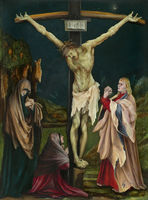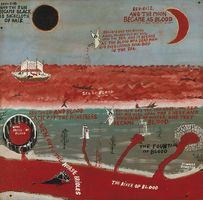Book of Chilam Balam of Chumayel
Yucatan, Mexico
Book of Chilam Balam of Chumayel, 1775–1800
Paper, orginally bound in leather (today in marble boards)
Spanish or Castilian and Mayan languages
55 20 x 15 cm leaves
Princeton Mesoamerican Manuscripts, Manuscripts Division, Department of Rare Books and Special Collections, Princeton University Library
Said to have been acquired from Julio Berzuna in 1945
No.4
The Maya developed a complex and detailed understanding of astronomy and calendrics, including a method for predicting both solar and lunar eclipses, long before the arrival of the Spanish. This manuscript, found by Don Adumaro Molina in the early nineteenth century, when Mexico was still a Spanish colony, describes the Spanish conquest of the Yucatan Peninsula as well as the history, rituals, prophecies, astronomy, architecture, mythology, calendar, songs, and incantations of the local Maya peoples. This page in particular bears writing in both Spanish and the Yucatec Maya language that discusses eclipses of both the moon and the sun.
In the text, a solar eclipse is described as “the eating of the sun,” reflecting the traditional Maya belief that a giant monster devours the sun during an eclipse. Eclipses were thus seen as disasters with the potential to destroy the sun and moon, so predicting them served as a warning and precaution. Although this terminology for discussing eclipses is Maya in origin, the imagery appears to be Spanish, a combination which is not uncommon in colonial-period texts. This fusion is due to the Maya fascination with new ideas and sciences, including those the Spanish brought with them.
Carly Pope, Princeton University Class of 2017, Princeton University Art Museum Summer Intern 2015
Bryan Just, Curator of Ancient American Art at the Princeton University Art Museum





















